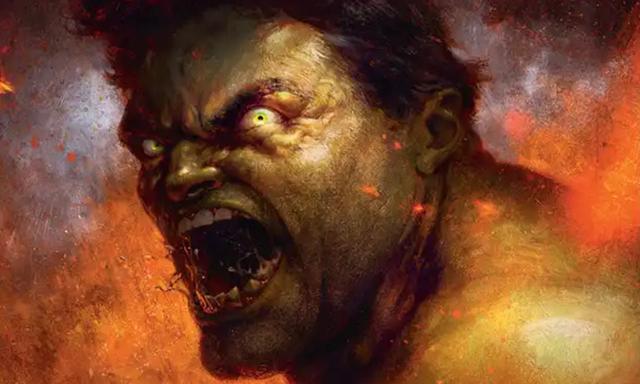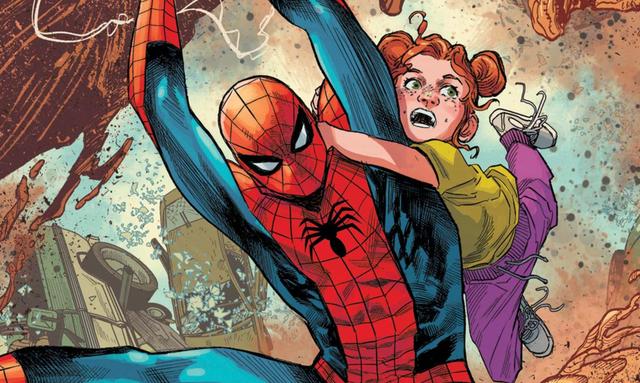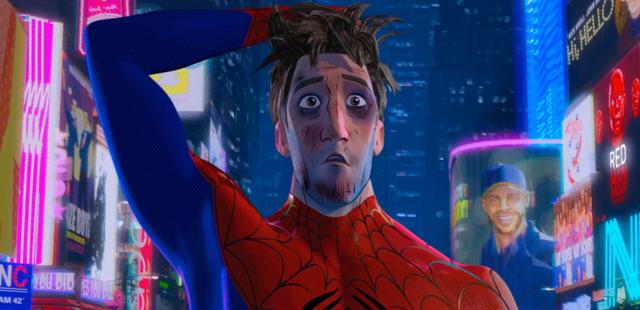If you click on a link and make a purchase we may receive a small commission. Read our editorial policy.
Spider-Man 2099: A guide to Marvel Comics' cyberpunk superhero
The cyberpunk world of Marvel 2099 has its own Spider-Man, with Miguel O’Hara as his world’s webslinging hero. With the character set to play a major role in Spider-Man: Across the Spider-Verse, here’s everything you need to know about the futuristic superhero.

Across all the parallel universes and alternate timelines of the Marvel Universe, one iteration of Spider-Man that looms large compared to his multiversal counterparts is Miguel O’Hara, better known as Spider-Man 2099. A brilliant young man living in a possible timeline decades ahead of the main comic book Marvel Universe (eventually retconned to take place in the alternate universe of Earth-928), Miguel endures a genetics experiment gone wrong similar to Peter Parker's and becomes the Spider-Man of his dystopian future world.
Since his debut in 1992, Spider-Man 2099 has become a fan-favorite futuristic twist on Spider-Man, blending superhero action with cyberpunk sensibilities. The character has gone on to appear in movies, television, and video games, often teaming up with his counterparts from alternate realities. With this year marking the 30th anniversary of Spider-Man 2099’s introduction (and knowing that Miguel O'Hara is going to play a big part in the next Spider-Verse movie), here is an overview of the cyberpunk webslinger’s history and immediate future.
Who Is Spider-Man 2099?

Spider-Man 2099 was created by Peter David and Rick Leonardi, first appearing in a five-page preview included in 1992’s Amazing Spider-Man #365 to commemorate the 30th anniversary of Spider-Man’s creation. Later that year, David and Leonardi launched a Spider-Man 2099 solo ongoing comic series as part of Marvel’s 2099 publishing line, with the titles set 107 years ahead of the contemporary Marvel Universe. This dystopian future saw the world run by corrupt megacorporations, with New York City having since been renamed Nueva York to reflect population shifts, and cyberpunk twists on familiar superhero mantles surfacing across this timeline.
Miguel escapes an unhappy home life to enroll in the Alchemax School for Gifted Youngsters due to his genius-level intellect. In this timeline, Alchemax is a conglomerate running much of the municipal systems in the United States, including law enforcement, going on to employ Miguel in its genetics research division following his graduation. Miguel becomes disillusioned by Alchemax’s illicit activities after being tasked to help develop their super-soldier program only to be hooked on an addictive drug called the Rapture in an elaborate scheme coercing him into remaining with the company. While Miguel attempts to rewrite his genetic code to cure himself of this addiction, his employers sabotage him by programming the gene splicing machinery to include spider DNA, unaware that this would give him superpowers.
Now possessing abilities similar to Spider-Man's, Miguel is hunted by Alchemax and decides to defend the common people from falling prey to all megacorporations as this timeline’s arachnid-themed superhero. Over the course of his superhero career, Miguel would battle Alchemax’s forces along with his own set of supervillains, including nefarious figures inspired by foes from the contemporary Marvel Universe, referred to in the 2099 timeline as the “Heroic Age.” A potential future for Spider-Man 2099 has Miguel take control of Alchemax after his world endures several cataclysmic events, using its vast resources for good towards the improvement of humanity and the planet.
An enormous success upon its debut in 1992, the original Spider-Man 2099 series ran until 1996, after the firing of Marvel 2099 line editor Joey Cavalieri and the departure of several comic creators in solidarity, including David. Marvel shuttered the 2099 publishing line several months later with the concluding title 2099: World of Tomorrow, wrapping up the timeline’s lingering storylines.
Since the cancellation of the original Spider-Man 2099 title and its accompanying publishing line, Miguel has resurfaced in several comic book stories, with characters from the main Marvel Universe either entering his timeline or Miguel being temporarily stranded in the relative present. David returned to the world of 2099, with artist Will Sliney, for a new Spider-Man 2099 series in 2014 that saw Miguel stranded in the Marvel Universe. This series came after the space-time continuum was tampered with in the Superior Spider-Man storyline 'Necessary Evil' by Dan Slott and Ryan Stegman, with Miguel investigating temporal anomalies in his timeline. After eventually returning to his own time, Miguel has since visited the Marvel Universe several times while continuing to defend the futuristic Nueva York.
Spider-Man 2099’s Powers and Abilities

The gene splicing accident that gave Miguel his powers puts him roughly on par with Peter Parker’s superhuman strength, speed, and endurance, able to lift several tons and dodge incoming gunfire. Like Spider-Man, Miguel has a slightly accelerated healing factor but not on the same level as Wolverine or Deadpool. While Miguel doesn’t have a spider-sense like Peter, his vision and hearing are enhanced more than Spider-Man's, including telescopic vision that makes him capable of seeing in total darkness.
The process in which Miguel gained his powers visibly altered his physical appearance, giving him pronounced claws on his hands and feet that allow him to stick to solid objects and tear through solid metal. Miguel’s canine teeth also grew into sharp fangs with venom glands; Miguel’s bite is capable of rendering most victims temporarily immobilized. Miguel also possesses the ability to fire organic webbing from glands in his forearms similar to Spider-Man’s web fluid.
The Spider-Man 2099 suit is a modified version of Miguel’s Day of the Dead costume, made from unstable molecule fabric similar to the Fantastic Four’s costumes. This material is virtually indestructible, can open up to allow Miguel natural use of his web glands and claws, and offers a degree of protection to his body. Miguel’s suit also has an artificial intelligence named Lyla that provides support for him when he's in action. He also fitted his suit with a device that allows him to glide, later upgrading it, in the second Spider-Man 2099 volume, to give himself the ability to fly.
How Spider-Man 2099 Fits in the Marvel Universe

While Miguel O’Hara and the 2099 timeline have not been referenced in the main Marvel Cinematic Universe, Spider-Man 2099 has appeared on the big screen. In the post-credits scene for 2018’s Academy Award-winning Spider-Man: Into the Spider-Verse, Spider-Man 2099 travels to Earth-67 where he confronts the 1960s animated iteration of Peter Parker. Oscar Isaac voices Miguel in this post-credits scene and is slated to reprise his role in its 2023 sequel Spider-Man: Across the Spider-Verse. While the full extent of Spider-Man 2099’s role in the film is unknown, a trailer pits him against Miles Morales.
While the animated movie is not explicitly connected to the MCU, Spider-Man: No Way Home and Doctor Strange in the Multiverse of Madness have shown past adaptations of Marvel properties tie into the expanding multiverse. Spider-Man 2099 has earned a vocal fanbase and, if the 2099 timeline were ever to figure into the MCU, Miguel O’Hara is the logical choice to lead the charge.
If you're catching up on Marvel trivia before big movie launches, check out Popverse's article on how Jane Foster became the Mighty Thor before the release of Thor: Love and Thunder!
Follow Popverse for upcoming event coverage and news
Find out how we conduct our review by reading our review policy
Let Popverse be your tour guide through the wilderness of pop culture
Sign in and let us help you find your new favorite thing.
















Comments
Want to join the discussion? Please activate your account first.
Visit Reedpop ID if you need to resend the confirmation email.